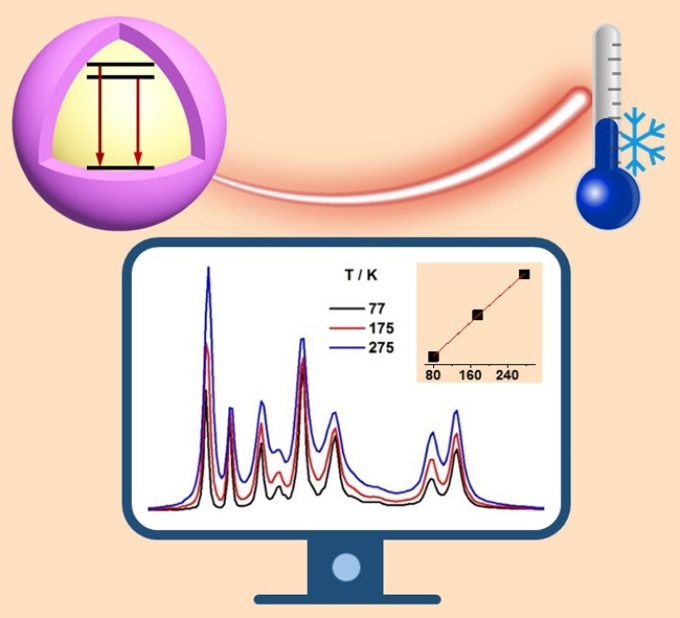Mar 28 2019
Recently, trivalent neodymium (Nd3+) ion-doped near-infrared (NIR) luminescent nanocrystals (NCs) have gained significant attention due to their advanced features such as outstanding NIR-to-NIR luminescent nanoprobes for deep-tissue bio-imaging and temperature sensing.
 Schematic representation of the ratiometric detection of cryogenic temperature based on LiLuF4:Nd3+ nanoprobes. (Image credit: Prof. CHEN’s Group)
Schematic representation of the ratiometric detection of cryogenic temperature based on LiLuF4:Nd3+ nanoprobes. (Image credit: Prof. CHEN’s Group)
However, resolving the electronic structures of Nd3+ in NCs and assigning its CF transition lines in the preferred NIR is still challenging due to the line broadening and multiple sites of Nd3+ in NCs.
In a recent research reported in Advances Science, a team of researchers headed by Prof. CHEN Xueyuan from Fujian Institute of Research on the Structure of Matter (FJIRSM) of Chinese Academy of Sciences described the electronic structures of Nd3+ in LiLuF4 NCs for the first time.
Eu3+ ion was used by the researchers as the structural probe to reveal the local site symmetry of Ln3+ dopants in LiLuF4 NCs with the help of time-resolved PL (TRPL) spectroscopy, high-resolution photoluminescence (PL) spectroscopy, and site-selective PL spectroscopy at 10 K.
A single spectroscopic area of S4 symmetry for Ln3+ dopants was detected in LiLuF4 NCs, which is in agreement with the crystallographic site symmetry of Lu3+ in LiLuF4 lattice.
Using temperature-dependent PL spectroscopy, they identified that a total number of 36 CF transition lines of Nd3+ in LiLuF4NCs in the NIR region were explicitly assigned.
In addition, by leveraging the well-resolved CF transition lines from the thermally coupled Stark sublevels of 4F3/2 of Nd3+, scientists demonstrated the application of LiLuF4:Nd3+ NCs as NIR-to-NIR luminescent nanoprobes for ratiometric detection of cryogenic temperature with an extensive linear range of 77–275 K and the highest relative temperature sensitivity (Sr) of 0.62% K−1, which is analogous to the best Sr value for Nd3+-activated luminescent nanothermometers which were described earlier.
The unequivocal discovery of photoactive site symmetry and electronic structures of Nd3+ in inorganic NCs is significantly important for future design and the development of Nd3+-based NIR luminescent nanoprobes toward flexible applications, for example, cryogenic temperature sensing for energy and space exploration.